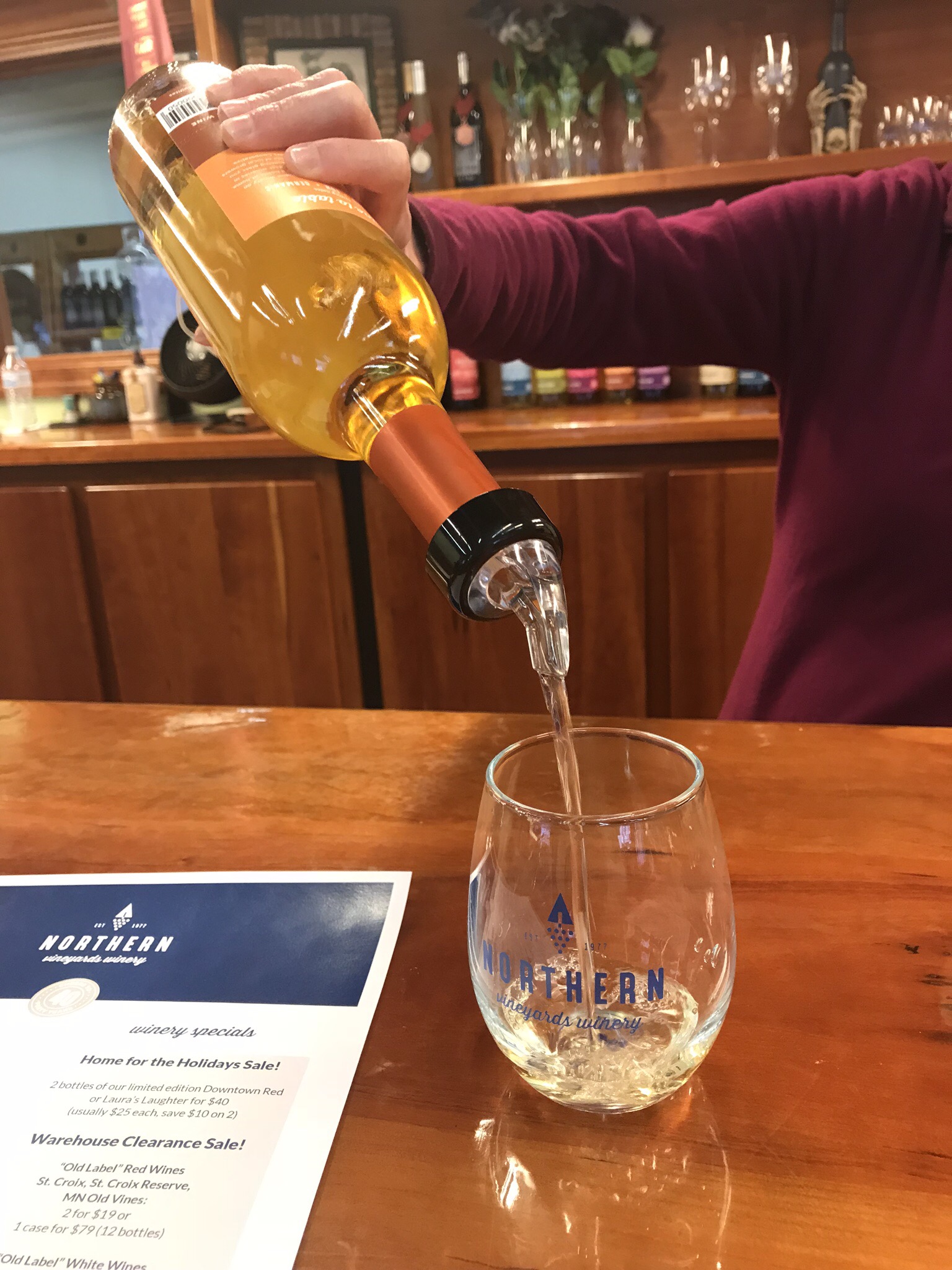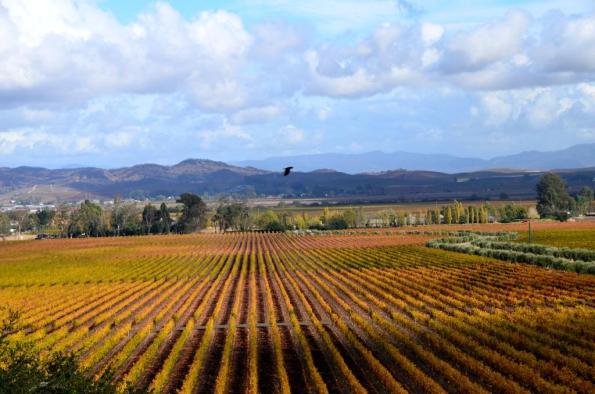Dan Huffman: ENVIRONMENTAL MODERATION
ENVIRONMENTAL MODERATION
A long time ago, they called Joey Buran “The California Kid.” His whole life prior to 1984 had been devoted to his dream of winning professional surfing’s most prestigious event- the Pipeline Masters in Hawaii. Above all he wanted glory, a modest payoff for his years of training and hard work. At almost the exact same time as his final heat ended, having just won, a tropical rainstorm moved through and sent everyone on the beach packing. Instead of victoriously hoisting the winner’s trophy overhead, basking in the admiration of his fellow surfers while thousands of scantily-clad, adoring fans cheered and waited for autographs, Joey sat on the beach- alone, and wet, and devoid of the praise he so desperately deserved.
I feel like that’s what happened in last month’s MWWC35 to the winner @thedrunkencyclist. His victory was eclipsed (yeah, I just did that) by a series of tragic events- wildfires in Sonoma/Napa, hurricanes in the Gulf coast, flooding in Europe. Allow me now to formally congratulate the winner, Jeff “The Drunken Cyclist.” Cheers! So what if even the most phlegmatic conspiracy theorist might be moved to investigate potential “home cooking” that allowed the creator of the contest to win the contest- transgression or not, I’d be certain the Russians were somehow involved! But it doesn’t take away from the fact that his modern adaptation of “Video Killed the Radio Star” for the wine world was a compelling piece and worthy winner.
Having not won, and not even being the “first loser,” a term us Gen X’ers spitefully refer to as second place, I’ll probably receive some kind of participation trophy GIF that I can paste on my non-existent blog. And if there is a silver lining, it’s that I won’t have a sophomore slump (this being my second entry and all, and technically, to slump you need something to slump from). I’m stalling because where do you start with a word like environment, especially in terms of wine?
I’m guessing the smart wine folks will write about environments, micro-environments and seemingly endless combinations of environmental factors, both natural and made-made, that affect growing, harvesting, and vinification of wine grapes. Some might even discuss the distinct environmental subtleties of wine markets as they relate to manufacturers, wholesalers, retailers and consumers. Still others might tackle the elephant in the room- The Environment. And I’m going to let them, because they’re more qualified. I would just end up throwing the word terroir around a bunch of times and boast about how I know the addresses and hours of operation of every wine and liquor store within a 100-mile radius from my house- impressive I know, but hardly the stuff of winning wine writing.
The environment I want to talk about is unequivocally the most important of all environments and arguably most influenced by our choices. The human body- unique, complex, adaptable; harboring trillions of tiny living organisms and more importantly, a final dumping ground for wine produced as a result of all those other environmental factors I mentioned above. Ecologically speaking, our bodies are not environments but rather ecosystems- who am I to split hairs (technically, The Environment is also an ecosystem)? Both are often used interchangeably, and if they weren’t, there would be no basis for my article.
What happens when we introduce wine into our bodies? Some people (likely drinkers) laud the benefits- reduces risk of heart attacks, heart disease, diabetes, stroke, cataracts and colon cancer while boosting the immune system, bone density, cognitive function brain function and longevity. Oh, and it’s great for your skin! The thing is, no one can really prove it. Sure, the statistics are there, but as a former university professor of mine always said, “Statistics are like bikinis- what they reveal is provocative, but what they conceal is vital.” And the vital part here is that wine needs to be drank in moderation. By moderation I mean 1 glass daily for women and two for men, and by glass, I mean 4 ounces, and by 4 ounces I mean significantly less than you or I normally pour ourselves.
So, the question is, how do we moderate our wine drinking in order to achieve maximum benefit to our bodily environment, especially those whose financial livelihoods come from drinking wine? The temptation to overindulge is ever-present, but fear not, through years of trial and mostly error I’ve developed a highly effective, albeit non-proven strategy to make sure we don’t overdo it. I call it:
M-O-D-E-R-A-T-E:
MORNINGS
ON THE LEVEL
DRINKING PARTNER
EDUCATION
ROUTINE
AGUA
TASTING
EAT
I’ll describe each briefly below using “Manifest Result” which is what you achieve on the surface, and “Latent Result” which is the underlying byproduct of following these instructions. Let’s begin:
M – MORNINGS
Mornings are for coffee. Don’t drink wine before noon and for the love of all things holy, stay away from wine-infused coffees.
MANIFEST RESULT: You’ll end up drinking at least 3 cups of coffee
LATENT RESULT: Jitters (but that can also be from lack of wine)!

O – ON THE LEVEL
Be honest with yourself . . . and others. Why are you drinking wine? Because you like the taste? To get drunk? To impress someone?
MANIFEST RESULT: Any psychologist, at least the ones I pay for, will tell you the sooner you come to terms with the “why,” the easier it is to limit your intake to a healthy level
LATENT RESULT: Being honest is generally considered a good thing and will likely help in most of your relationships

D – DRINKING PARTNER (that’s Drankin’ Patna if you’re T-Pain)
If you find yourself alone in the dark, drinking whatever you have, straight out of the bottle that you hid under your bed, you’re not going to be successful in moderating your consumption. Don’t drink alone. Find a drinking partner, set firm ground rules, and drink together.
MANIFEST RESULT: You’ll be accountable to each other. It can be all about the wine and not the drinking. In addition, it’ll stop you from drinking on those days when nobody’s around.
LATENT RESULT: Doesn’t hurt to pick an attractive drinking partner. Anytime wine is involved there is potential for tomfoolery (wink, wink).

E- EAT
As often as you can, pair your wine with food, even if you don’t know all the “how-to’s.”
MANIFEST RESULT: You won’t just be consuming alcohol
LATENT RESULT: You’ll find that wine enhances your meal, and you’ll eventually learn what wine/food pairings best suite your tastes

R – ROUTINE
Commit to an exercise routine 3-5 times a week, preferably early mornings.
MANIFEST RESULT: If you know you have an early work out, you won’t be boozing heavily the night before
LATENT RESULT: You’ll get all buff, and get checked-out by other buff people at the gym- who doesn’t want that? Plus, it’s good for your body’s environment
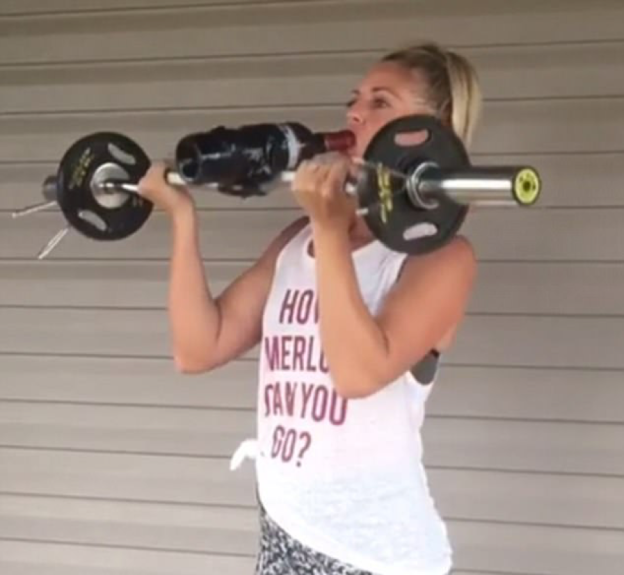
- A- AGUA
Drink water- a lot of it throughout the day. No need for further explanation.
T – TASTING
If you’re going to do wine tasting, make sure they’re public tastings- you can still invite your drinking partner, but make sure there are plenty of other people there too.
MANIFEST RESULT: Peer pressure at these types of events insures that most people initially spit out the wines that they taste, at least for an hour or so. After that, it generally digresses to no-holds-barred.
LATENT RESULT: By spitting wines out, you may actually be able to taste and analyze wines beyond the second glass.

E – EDUCATION
Learn about the wines your drinking- the grape(s), origin, year, terroir (you knew I’d get one in there), etc. I call this “Let’s Play Doctor.” Doctors see people naked every day. We take comfort in thinking that they’ve extensively studied private parts and they’re not weird about it. And while they can appreciate the beauty of the human form, first and foremost they’re learned professionals with a job to do. Play doctor when it comes to wine.
MANIFEST RESULT: You’ll find it’s more about the wine than the drinking
LATENT RESULT: You may learn to better appreciate the wines you’re drinking the more you know about them
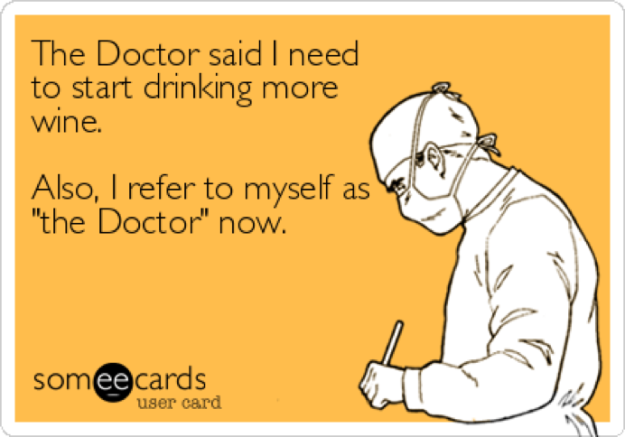
Chiara Giorleo: Environment is not only terroir as demonstrates Trump winery
We have another great entry into this month’s Challenge (#MWWC36) from Chiara Giorleo, from all the way over in Italy
You can check out the post here:
Environment is not only terroir as demonstrates Trump winery
http://www.chiaragiorleo.com/en/2017/11/16/environment-is-not-only-terroir/
Thanks for another great post!
MWWC#36: Environment
“Wait Master, it might be dangerous… you go first.”
Jeff at The Drunken Cyclist won the honor of winning the last Monthly Wine Writers Challenge and his reward was picking out the theme for the next challenge. He chose “environment.” I am the not the person to ask about the environment, as I can appreciate the end result from those that work the soil, I am lucky if I can grow dirt. It is pretty sad, that as a homeowner, that I or my Bride can not grow anything, and when we do get kind of successful the local rabbits and deer seem to cut short our progress. Thankfully the world of wine, does not have to depend on my ability to grow anything.
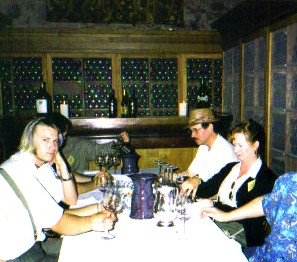
I thought of the recent fires that ravaged the wine country in California and then in Spain. I read some of the transcripts and even followed…
View original post 830 more words
MWWC 36: Environment
Life is funny. Recently, I went back home to Texas for a visit, which conveniently coincided with Jeff (having won last month’s challenge) setting this month’s challenge as Environment. Hailing from the Texas Hill Country Appellation, I mentally began creating bullet points about the environment of the Texas Hill Country Appellation and which wineries […]
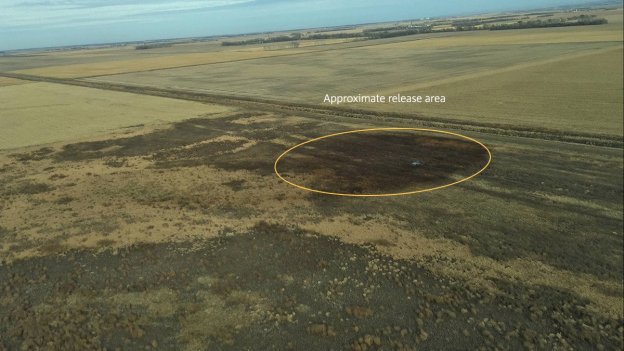
Organic & Biodynamic Wines and the Environment – #MWWC36

Sometimes procrastination pays off. As I was pondering the topic for this month’s Monthly Wine Writing Challenge, Environment, and trying to determine what I would write, the Keystone Pipeline leaked some 210,000 gallons of oil. That’s about 5,000 barrels! Regardless of your opinion on the pipeline, I think we can all agree that spilling crude oil is not a positive event for the environment.
What does this have to do with wine? Nothing, really. However, it got me thinking about how we can continue to function in the modern, industrialized world while being good stewards of the environment in which we live. Therein lies the connection to wine.
Modern agricultural operations, including vineyards, incorporate the use of things like chemical fertilizers and genetically…
View original post 643 more words
Environments of Wine
We all love to wax-poetic about the wine – about the magic in the glass, about the liquid which can transport us through time, bring back memories, change our mood, brighten up any happy moments in our life and put smiles on our collective oenophile faces in the myriad of mysterious ways.
With all that magic, it is easy to forget that first and foremost, the wine is an agricultural product. The grapes are grown in exactly same way as tomatoes, cucumbers, cabbage, wheat, apples, and potatoes. Same as with any agricultural product, the success of growing the grapes depends on many conditions which we collectively call “the environment” – condition of the soil, conditions of the plants, climate/weather conditions, availability and quality of the water, avoidance of diseases and pests, ability to protect plants and fruits from animals and birds and many other factors.
Once the grapes…
View original post 1,094 more words
#MWWC35 Time to Vote!
Eclipse
This is my entry for Monthly Wine Writing Challenge #35. I should let you all know, I have little dignity, and no shame, so I fully intend to vote myself the winner for this challenge (and likely all challenges going forward)!
It was a big deal, this eclipse. Like a tribe of tech-savvy, modern-day Incas armed only with our ISO approved solar sunglasses, we readied our iPhone cameras to document our experience on social media and stared in unison directly at the sun. And all the while, for just a smidgeon of time, we completely forgot about Russia. And the eclipse came and went, but the Russians didn’t. Can we get back to Russia, who some 30 years ago cast their own longer-lasting, Gorbachev-shaped eclipse over what is now Transcarpathian Ukraine? You see, it was then, around the mid-1980s that Mikhail Gorbachev, President of the now defunct Soviet Union, probably angry about the birthmark on top of his head that looked eerily similar to a red wine spill, decided that Russians drank too much wine (and booze) and devised among other things, to destroy all the grape vines throughout his various territories, including those in Transcarpathia. Down went the international varieties- Merlot, Pinot Noir, Cabernet Franc, Riesling. Regional and local varieties like Traminer, Harslevelo, Furmint, several types of Muscat, Bakator and Zweigelt met similar fates. What Gorby (that’s what I call him) failed to realize and probably should have, is that Russians are Russian after all, and they’re going to drink- cutting down decades of carefully cultivated wine grapes only insured that they drank something else besides wine.
I am talking about the area below, the foothills of the Transcarpathian mountains on roughly the same latitude as Burgundy and only about 75 miles from the famed Tokaj wine region of Hungary.
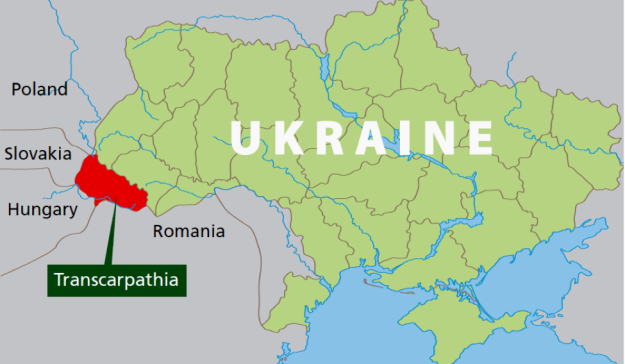
Of course, the slaying of unarmed wine grapes was not the beginning of this eclipse- perhaps only the point where the moon completely covered the sun. Our story begins much earlier and continues long after. Transcarpathian Ukraine was once part of the Austro-Hungarian empire, and during the 1980s, over 90% of the population living there were ethnic Hungarians. Russians occupied Transcarpathia, and indeed all of Hungary, after pushing out the Nazis during World War II. Russian occupation demanded landowners of any consequence surrender it to the State. They were allowed to tend to the grapes and various crops, but the wine production and distribution was always state owned and operated. The wine, both reds and whites became typical dumbed-down communist-era stuff, made only for the purpose of shipping to the eastern regions of the empire. The inlanders must have liked it plenty, or didn’t know any better, because enough of it was drank to convince Gorbachev that the vines needed to go.

The prohibition ended in the late 80s when Gorbachev became convinced that enough Russians had forsaken their Bloody Marys for Hail Marys- that and it had crippled the Russian economy while inadvertently giving rise to black market moonshine. Slowly, vines were replanted in Transcarpathia, but not everywhere they had been and not the same kinds. Up sprang Isabella (for you buffs of American wine history), Kadarka (or likely some Kadarka hybrid) and Golubok among others- grapes that were easier to care for, more resistant to frost, rot and all the other dangers. Why plant anything else when you were a small cog in the big communist machine? As the old saying went, “We pretended to work and they pretended to pay us!”
Communism ended here in 1991, and some of the vineyards have since been given back to their original owners, though many more have not, and still more have been snatched up and privatized by opportunists with the aid of corrupt government officials. Still, most of the vineyards are small, family-owned affairs. Driving along the hilly countryside from village to village you can see vacated rows where vines once flourished. It always reminds me of David Beckham’s ill-advised haircut- a small consolation to such a visceral tragedy.

Nowadays, the wine culture in Transcarpathia is in many ways a microcosm of greater Ukraine- I call it the Wild West in the East, where anything goes. In “The World Atlas of Wine,” Hugh Johnson and Jancis Robinson rightly contend that the type of wine produced in a given area is subject to the demands of the market in that area. At any time, on any street, at any number of houses you can buy a liter of wine served in a washed out plastic Coca-Cola bottle (there’s a strong focus on recycling in these parts!) for around fifty cents. Wine made from actual fermented grape must is more the exception than the rule. Most of the time it is grape pomace, sugar and water, whereas wine tablets are readily available for less enthusiastic producers. All of this is masked on the surface using a few tiny drops of aftermarket scented oil. Wine comes out smelling like roses. . .literally, or chocolate chip cookies baking in the oven, or something that vaguely resembles Chanel no5. The purpose is twofold: 1) make the wine smell exotic for those who don’t know better and 2) make the wine smell anything other than what it is for those who do. There are laws governing grapes and wine to be sure, but very few know what they are and even fewer would follow them even if they did.
Broken as it may be, the market works because the winemaker’s only concern is selling to busloads of thirsty, happily uninformed Ukrainian (and sometimes Russian) tourists who seem more than willing to overpay. Many Ukrainian tourist websites boast Transcarpathia’s 1000+ years of wine tradition (true) and that it produces the finest reds in Ukraine (also probably true, God help us all!) This tourist-friendly area hosts wine tastings, tours, wine country fun runs and festivals. Each year around harvest, prominent local vintners dress in fancy garb resembling some sort of patriarchs and take turns giving each other awards- like the Oscars. Attention is then paid to the pretty young virgins (as tradition would have it, although I think the rules are more relaxed now) who dress in Hungarian and/or Ukrainian folk outfits and stomp grapes barefoot- to the delight of both the wannabe popes and onlookers alike. Wine is tasted, food is eaten, music is played- on this day, more than any other day, the permanent eclipse is less noticeable- like smog.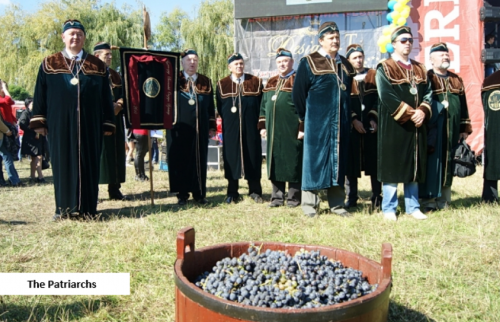
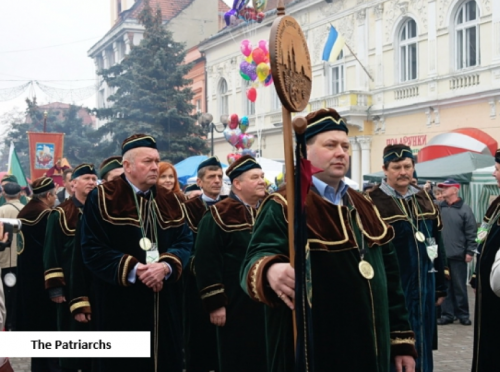


All of this begs the obvious question: why not replant with better wine grapes, focus on making serious wine and create opportunities for export (and international recognition)? Right now, the Ukrainian market doesn’t demand quality wine and wouldn’t pay for it, which leaves only export. The majority of winemakers in Transcarpathia are small and don’t have the time or money to wait five years for new plantings and there’s no guarantee that their endeavor would produce exportable wine. Of course, the monoliths of Transcarpathia, Chizay and Cotnar, who have the most money and largest vineyard lands, realize that eventually tourism alone will not be enough and are now pushing exports- an often fruitless (pun completely intended) task in the competitive wine export industry. However, I did find The Wine Voyager Winter Import Wine Catalog 2016/Spring 2017 edition (Southern Glazer’s) offering a Chizay red- a real accomplishment, and a steal at $90.00 per case, even for a non-vintage!


Only time will tell if they prove successful- for now, the deck is stacked against them.
The eclipse is a thing of the past, at least for now. Our solar sunglasses have been stored away, the videos and pics archived in our phones, and memories of it all but faded from our minds. Do you remember what it felt like- the darkness that descended blotting the sun from the sky? We’d do well to occasionally remember, and think of a small group of mostly Hungarian vintners in Transcarpathia, who toil under the virtual darkness of a Russian-induced eclipse their entire lives. The imagery is dramatic, but then so are the circumstances- country invaded, land taken, crops confiscated then cut down altogether. Given enough time, this eclipse too shall pass and the sun should once again shine brightly on this part of the world.
